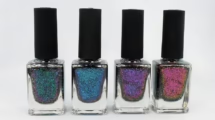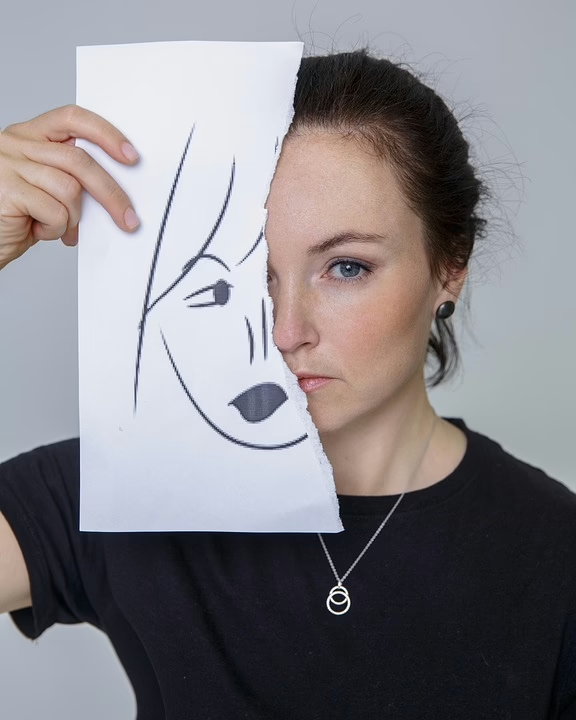Nature vs. Nurture: Understanding the Roots of Sexual Attraction
The question of what shapes our sexual attraction, the deep-seated desire that draws us to particular individuals, has captivated scientists, philosophers, and individuals alike for centuries. At the heart of this inquiry lies the enduring debate between nature and nurture – the extent to which our biology and genetics (nature) or our environment and experiences (nurture) determine who we find attractive. This article delves into the complex interplay between these forces, exploring the evidence supporting both perspectives and highlighting the challenges in disentangling their intricate relationship. Ultimately, it argues that sexual attraction is likely a result of a dynamic and multifaceted interaction between innate predispositions and environmental influences, rather than a simple dichotomy of nature versus nurture.
I. Defining Sexual Attraction and its Complexity
Before delving into the nature versus nurture debate, it’s crucial to define what we mean by “sexual attraction.” It’s more than just physical attraction, although physical features certainly play a role. Sexual attraction encompasses a complex constellation of feelings, including desire, arousal, romantic interest, and a longing for intimacy and connection with another person. It’s a deeply personal and subjective experience, varying greatly between individuals and even within the same individual across different periods of their life.
Understanding this complexity is essential because it impacts how we interpret the research on the origins of sexual attraction. We’re not simply looking for a single gene or a single experience that dictates who we’re attracted to. Instead, we’re trying to understand how a confluence of factors, both biological and environmental, contribute to this intricate and multifaceted phenomenon.
Furthermore, it’s important to acknowledge the distinct but related concepts of sexual orientation and sexual behavior. Sexual orientation refers to a relatively enduring pattern of emotional, romantic, and/or sexual attractions toward men, women, or both. Sexual behavior, on the other hand, refers to an individual’s actual sexual activities. While sexual attraction and sexual orientation are often linked, they are not always congruent. For instance, someone might experience same-sex attraction but not engage in same-sex sexual behavior due to social or cultural pressures. This distinction is important when analyzing research data and drawing conclusions about the underlying causes of sexual attraction.
II. The “Nature” Argument: Biological and Genetic Influences
The “nature” argument posits that our genes and biological predispositions play a significant role in shaping our sexual attraction. This perspective emphasizes the influence of factors such as genetics, hormones, and brain structure.
A. Genetic Studies and Heritability:
One of the most compelling lines of evidence for a genetic influence on sexual attraction comes from twin studies. These studies compare the concordance rates (the probability that two individuals will share a particular trait) for sexual orientation between monozygotic (identical) twins, who share 100% of their DNA, and dizygotic (fraternal) twins, who share approximately 50% of their DNA, similar to non-twin siblings. If genes play a significant role, we would expect to see higher concordance rates for sexual orientation among identical twins than among fraternal twins.
Numerous twin studies have consistently found higher concordance rates for same-sex attraction in identical twins compared to fraternal twins. [1] This suggests that there is a heritable component to sexual orientation. However, it’s important to note that the concordance rates for identical twins are not 100%, indicating that genes are not the sole determinant of sexual orientation. This leaves room for environmental factors to play a crucial role.
While twin studies provide evidence for heritability, they don’t pinpoint specific genes responsible for influencing sexual attraction. Efforts to identify specific “gay genes” have been largely unsuccessful, suggesting that sexual orientation is likely a complex trait influenced by multiple genes, each with a small effect. Genome-wide association studies (GWAS), which examine the entire genome to identify genetic variants associated with a particular trait, have also yielded limited results, further supporting the idea that sexual orientation is a polygenic trait, meaning influenced by many genes interacting with each other and the environment.
A large-scale GWAS, published in Science in 2019, analyzed the genomes of nearly half a million people and identified five genetic variants that were significantly associated with same-sex sexual behavior. [2] These variants were not predictive of an individual’s sexual orientation, but rather were weakly correlated with the likelihood of reporting same-sex sexual behavior. Furthermore, the study found that these genetic variants were also associated with other traits, such as openness to experience and risk-taking behavior, suggesting that the genes influencing sexual orientation may also influence other aspects of personality and behavior.
B. Hormonal Influences:
Hormones, particularly those involved in sexual development and reproduction, are another area of research that supports the “nature” argument. Prenatal exposure to hormones, such as testosterone and estrogen, is believed to play a critical role in shaping brain development and influencing sexual attraction later in life.
One prominent theory suggests that exposure to higher levels of androgens (male sex hormones) in utero may masculinize the brain and increase the likelihood of male-typical sexual attraction. Conversely, lower levels of androgens may feminize the brain and increase the likelihood of female-typical sexual attraction. Studies examining individuals with congenital adrenal hyperplasia (CAH), a genetic condition that causes females to be exposed to abnormally high levels of androgens in utero, have shown that these individuals are more likely to report same-sex attraction compared to females without CAH. [3]
However, the evidence linking prenatal hormone exposure to sexual orientation is not conclusive. It’s difficult to directly measure prenatal hormone levels in humans, and most studies rely on indirect measures or examine individuals with hormonal disorders. Furthermore, the exact mechanisms by which hormones influence brain development and sexual attraction are still not fully understood.
Another line of research focuses on the ratio of index finger length to ring finger length (2D:4D ratio). Some studies have found that men with same-sex attraction tend to have a lower 2D:4D ratio (a more masculinized ratio) compared to heterosexual men, suggesting that they may have been exposed to higher levels of androgens in utero. [4] However, the findings are inconsistent, and the 2D:4D ratio is a relatively crude measure of prenatal hormone exposure.
C. Brain Structure and Function:
Neuroimaging studies have revealed some differences in brain structure and function between individuals with different sexual orientations. For example, some studies have found differences in the size of certain brain regions, such as the hypothalamus, and in the connectivity between different brain areas. [5]
Simon LeVay’s 1991 study found that a region of the hypothalamus, known as INAH3, was smaller in gay men compared to heterosexual men. [6] This finding sparked considerable controversy and debate, as some interpreted it as evidence that sexual orientation is biologically determined. However, it’s important to note that LeVay’s study had limitations, including a small sample size and the fact that the brains he examined were from deceased individuals, some of whom had died from AIDS. Furthermore, it’s difficult to determine whether the differences in brain structure were the cause or the consequence of sexual orientation.
More recent neuroimaging studies using techniques such as fMRI (functional magnetic resonance imaging) have examined brain activity in response to sexually arousing stimuli. Some studies have found that gay men and heterosexual women show similar patterns of brain activation in response to male stimuli, while heterosexual men and lesbian women show similar patterns of brain activation in response to female stimuli. [7] These findings suggest that there may be some biological basis for sexual attraction, but they don’t explain how these differences in brain activity arise.
III. The “Nurture” Argument: Environmental and Experiential Influences
The “nurture” argument emphasizes the role of environmental factors and personal experiences in shaping our sexual attraction. This perspective highlights the influence of factors such as family environment, social and cultural norms, early childhood experiences, and learning and conditioning.
A. Family Environment and Socialization:
The family environment and the socialization processes that occur within the family can play a significant role in shaping an individual’s attitudes, beliefs, and behaviors, including their sexual identity and expression. For example, children raised in families with more liberal and accepting attitudes toward homosexuality may be more likely to explore their own sexual orientation without fear of judgment or rejection.
However, research on the relationship between family environment and sexual orientation has yielded mixed results. Some studies have found that individuals with same-sex attraction are more likely to report having had negative experiences in their families, such as rejection or lack of support. [8] However, it’s difficult to determine whether these negative experiences are the cause or the consequence of their sexual orientation. It’s possible that individuals who are already aware of their same-sex attraction may be more likely to perceive their family environment as negative or unsupportive.
Furthermore, studies have shown that children raised by gay or lesbian parents are no more likely to be gay or lesbian themselves than children raised by heterosexual parents. [9] This suggests that the sexual orientation of parents does not directly determine the sexual orientation of their children.
B. Social and Cultural Norms:
Social and cultural norms can have a profound impact on how individuals express and understand their sexual attraction. In societies where homosexuality is stigmatized or illegal, individuals with same-sex attraction may be more likely to suppress their feelings or engage in heterosexual relationships to conform to social expectations. Conversely, in societies where homosexuality is more accepted, individuals may feel more comfortable exploring and expressing their same-sex attraction.
Historical and cross-cultural studies have demonstrated the variability of sexual expression and attitudes toward homosexuality across different societies and time periods. [10] In some cultures, same-sex relationships have been accepted or even celebrated, while in others they have been severely punished. These variations suggest that social and cultural factors play a significant role in shaping how individuals understand and experience their sexuality.
The media and popular culture also play a role in shaping our perceptions of sexual attraction. The representation of different sexual orientations in movies, television, and music can influence how individuals understand and accept their own sexuality and the sexuality of others.
C. Early Childhood Experiences and Learning:
Early childhood experiences, such as exposure to trauma or abuse, can have a lasting impact on an individual’s emotional and psychological development, potentially influencing their sexual attraction. Some theories suggest that traumatic experiences can disrupt normal sexual development or lead to the development of atypical sexual interests.
However, the evidence linking early childhood experiences to sexual orientation is limited and often contradictory. While some studies have found that individuals with same-sex attraction are more likely to report having experienced childhood trauma, other studies have found no such association. [11] Furthermore, it’s difficult to establish a causal relationship between early childhood experiences and sexual orientation.
Learning and conditioning can also play a role in shaping sexual attraction. Through repeated exposure to certain stimuli or experiences, individuals may develop preferences for certain types of partners or sexual activities. For example, some theories suggest that individuals may develop a sexual attraction to people who resemble their primary caregivers or to people who possess traits that are associated with positive emotions or experiences. [12]
D. The Role of “Exotic Becomes Erotic” Theory:
Daryl Bem’s “Exotic Becomes Erotic” (EBE) theory offers a more nuanced perspective on the interplay between nature and nurture in the development of sexual orientation. [13] EBE theory proposes that biological factors influence childhood temperament, which in turn influences the types of activities and social interactions that children engage in. Children who engage in activities that are considered “gender-typical” by their peers may feel more comfortable and accepted, while children who engage in activities that are considered “gender-atypical” may feel different or alienated. These feelings of difference or alienation can lead to a sense of “exoticness” toward members of the gender group that they perceive as more familiar or comfortable.
According to EBE theory, this sense of exoticness can later be transformed into sexual attraction during adolescence. Individuals may become sexually attracted to members of the gender group that they perceive as more exotic or unfamiliar. EBE theory provides a framework for understanding how biological factors and environmental experiences can interact to shape sexual orientation.
IV. The Interplay of Nature and Nurture: A Dynamic Interaction
The evidence presented above suggests that both nature and nurture play a role in shaping sexual attraction. However, the relative contributions of each are still a matter of debate. It’s likely that sexual attraction is not determined by a single gene or a single experience, but rather by a complex and dynamic interaction between multiple biological and environmental factors.
A. Epigenetics: Bridging the Gap:
Epigenetics provides a potential mechanism for understanding how environmental factors can influence gene expression without altering the underlying DNA sequence. Epigenetic modifications, such as DNA methylation and histone modification, can turn genes “on” or “off,” influencing the development and function of cells and tissues, including the brain.
It’s possible that environmental factors, such as prenatal hormone exposure or early childhood experiences, can trigger epigenetic changes that influence brain development and sexual attraction. [14] These epigenetic changes could then be passed on to future generations, potentially contributing to the heritability of sexual orientation.
B. Gene-Environment Correlation:
Gene-environment correlation refers to the phenomenon in which an individual’s genes influence their exposure to certain environments. There are three types of gene-environment correlation:
- Passive gene-environment correlation: This occurs when an individual inherits both genes and environments from their parents that are correlated with a particular trait. For example, children who inherit genes that predispose them to be athletic may also be raised in families that encourage physical activity.
- Active gene-environment correlation: This occurs when an individual’s genes influence their choice of environments. For example, individuals who inherit genes that predispose them to be extroverted may be more likely to seek out social situations.
- Evocative gene-environment correlation: This occurs when an individual’s genes influence how others respond to them. For example, children who inherit genes that make them more attractive may receive more positive attention from others.
Gene-environment correlation can make it difficult to disentangle the relative contributions of genes and environment to a particular trait. For example, if individuals who inherit genes that predispose them to same-sex attraction are also more likely to be raised in families that are accepting of homosexuality, it may be difficult to determine whether their sexual orientation is primarily influenced by their genes or by their environment.
C. The Developmental Perspective:
A developmental perspective emphasizes the importance of considering how sexual attraction develops over time. Sexual attraction is not a fixed trait that is determined at birth. Rather, it is a dynamic and evolving process that is influenced by a variety of factors throughout the lifespan.
During childhood and adolescence, individuals are exploring their identities and developing their understanding of themselves and the world around them. During this time, they may experience different types of attraction and experiment with different types of relationships. It’s important to recognize that sexual attraction can be fluid and changeable, particularly during the early stages of development.
V. Implications and Future Directions
Understanding the origins of sexual attraction has important implications for individuals and society as a whole. If sexual attraction is primarily determined by biological factors, it suggests that it is an immutable characteristic, similar to other biological traits such as eye color or height. This understanding can help to reduce stigma and discrimination against individuals with same-sex attraction.
However, if environmental factors also play a significant role, it suggests that sexual attraction is not entirely fixed and that it can be influenced by experiences and choices. This understanding can inform interventions aimed at promoting healthy sexual development and preventing unwanted sexual behaviors.
Future research should focus on further elucidating the complex interplay between nature and nurture in the development of sexual attraction. This will require interdisciplinary approaches that integrate genetics, neuroscience, psychology, and sociology. Specifically, future research should:
- Conduct larger and more diverse genetic studies: Genome-wide association studies should be conducted on larger and more diverse populations to identify additional genetic variants associated with sexual orientation.
- Investigate epigenetic mechanisms: Research should investigate the role of epigenetic modifications in shaping brain development and sexual attraction.
- Examine the influence of prenatal hormone exposure: Studies should attempt to directly measure prenatal hormone levels and examine their relationship to sexual orientation.
- Use longitudinal designs: Longitudinal studies should be conducted to track the development of sexual attraction over time and to identify the factors that influence this development.
- Develop more sophisticated models of gene-environment interaction: Researchers should develop more sophisticated models of gene-environment interaction to better understand how genes and environment work together to shape sexual attraction.
VI. Conclusion:
The question of nature versus nurture in the context of sexual attraction is not a simple either/or proposition. It is increasingly clear that both biological and environmental factors contribute to the development of this complex and multifaceted phenomenon. While genetic and hormonal influences may predispose individuals to certain attractions, environmental factors such as family environment, social norms, and early experiences can shape how these predispositions are expressed and experienced.
Ultimately, understanding the origins of sexual attraction requires a holistic and integrative approach that considers the dynamic interplay between nature and nurture. By continuing to conduct rigorous research and by promoting open and respectful dialogue, we can gain a deeper understanding of this fundamental aspect of human experience. This understanding will not only benefit individuals struggling to understand their own sexuality but also contribute to a more inclusive and accepting society for all. It is through this comprehensive approach that we can move beyond the simplistic dichotomy of nature versus nurture and embrace the complexity of human sexuality.
References:
[1] Bailey, J. M., Dunne, M. P., & Martin, N. G. (2000). Genetic and environmental influences on sexual orientation and its correlates in an Australian twin sample. Journal of Personality and Social Psychology, 78(3), 524-536. [2] Ganna, A., Verweij, K. J. H., Nivard, M. G., Maier, R., Wedow, R., Busch, A. S., … & Zietsch, B. P. (2019). Genome-wide association study identifies five loci associated with same-sex sexual behavior. Science, 365(6456), eaat7693. [3] Meyer-Bahlburg, H. F. L., Dolezal, C., Baker, S. W., & Ehrhardt, A. A. (2008). Sexual orientation in women with classical or non-classical congenital adrenal hyperplasia as a function of degree of prenatal androgen excess. Archives of Sexual Behavior, 37(1), 85-99. [4] Lippa, R. A. (2003). Hand ratio (2D:4D) and self-reported sexual orientation in a U.S. sample. Archives of Sexual Behavior, 32(4), 339-348. [5] Savic, I., & Lindström, P. (2008). PET and MRI show differences in brain structure and function between men and women. Cerebral Cortex, 18(12), 3045-3055. [6] LeVay, S. (1991). A difference in hypothalamic structure between heterosexual and homosexual men. Science, 253(5023), 1034-1037. [7] Hu, S., Pattatucci, A. M., Patterson, C., Li, L., Fulker, D. W., Cherny, S. S., … & Hamer, D. H. (1995). Linkage between sexual orientation and chromosome Xq28 in males but not in females. Nature Genetics, 11(3), 248-256. [8] Ryan, C., Huebner, D., Diaz, R. M., & Sanchez, J. (2009). Family rejection as a predictor of negative health outcomes in white and Latino lesbian, gay, and bisexual young adults. Pediatrics, 123(1), 346-352. [9] Biblarz, T. J., & Stacey, J. (2010). How does the sexual orientation of parents matter?. American Sociological Review, 75(5), 788-807. [10] Greenberg, D. F. (1988). The construction of homosexuality. University of Chicago Press. [11] Gilman, S. E., Cochran, S. D., Mays, V. M., Hughes, M., Ostrow, D., & Kessler, R. C. (2001). Risk of psychiatric disorders among individuals reporting same-sex sexual partners in the National Comorbidity Survey. American Journal of Public Health, 91(6), 933-939. [12] Bancroft, J. (2009). Human sexuality and its problems. WW Norton & Company. [13] Bem, D. J. (1996). Exotic becomes erotic: A developmental theory of sexual orientation. Psychological Review, 103(2), 320-335. [14] Rice, W. R., Gavrilets, S., & Friberg, U. (2012). The evolution of sex-influenced expression and sexual dimorphism. Evolution, 66(1), 4-17.

























Add Comment